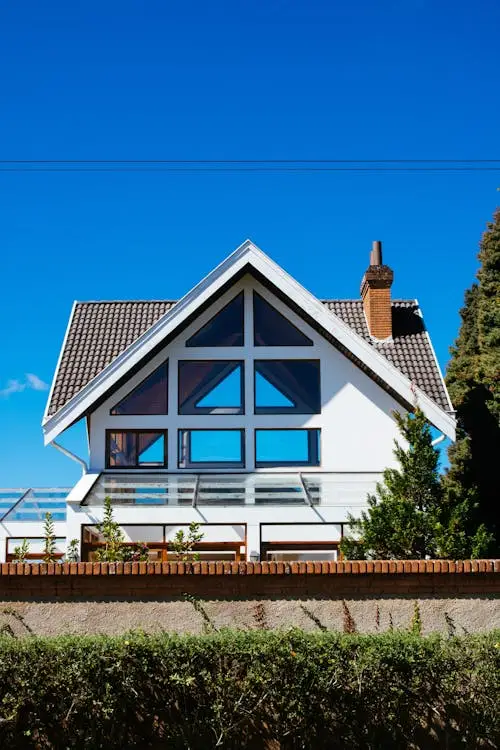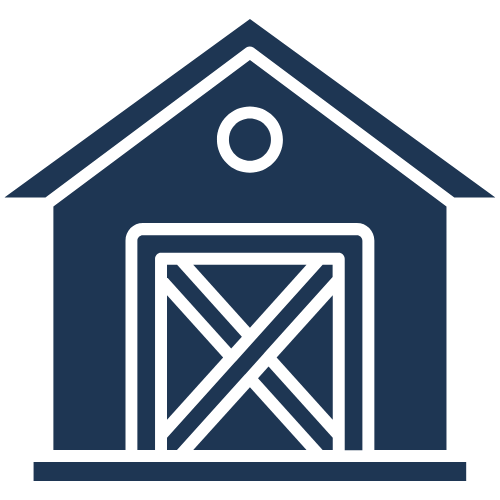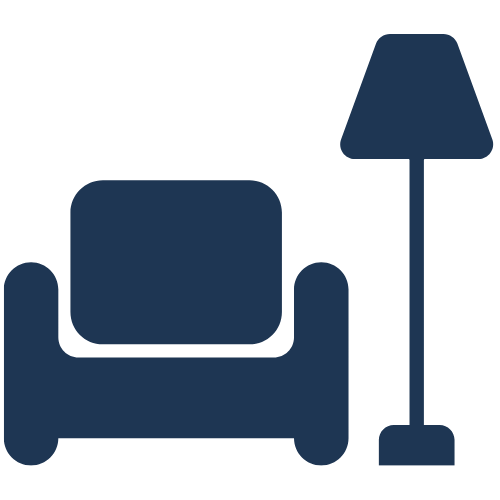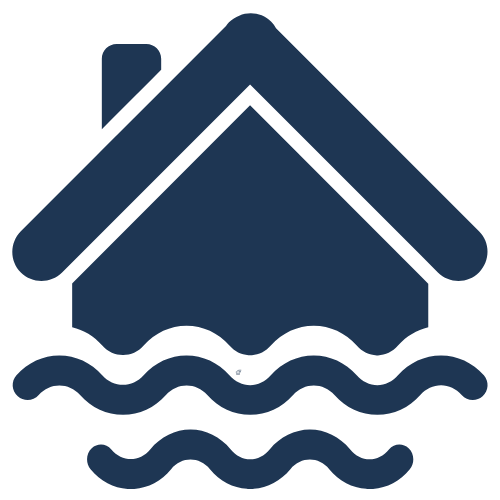Home Insurance Coverages
Explore what each type of coverage protects
Click to learn more about the individual coverage types

Homeowners Insurance Informational center
Home insurance, also known as homeowners insurance, provides financial protection for your home and personal belongings in the event of damage, theft, or liability. It typically covers the structure of your home, personal property, and additional living expenses if you're temporarily displaced. Most policies also include personal liability coverage in case someone is injured on your property.
Coverage A: Dwelling Coverage
Coverage A: Dwelling Coverage is the foundation of any homeowners insurance policy. It protects the structure of your home, including the walls, roof, floors, and any built-in fixtures like cabinets or plumbing systems. If your home is damaged or destroyed by a covered peril—such as fire, windstorm, hail, lightning, or vandalism—Coverage A helps pay for the repair or rebuilding of your home. This includes not only the physical structure but also attached components such as a garage or deck.
The amount of dwelling coverage you carry should reflect the full replacement cost of your home, not its market value. Replacement cost considers what it would take to rebuild the house with similar materials and quality at current labor and material prices. Many insurers offer options like Extended Replacement Cost or Guaranteed Replacement Cost, which provide additional funds in case construction costs rise unexpectedly after a loss.
Coverage A typically excludes certain types of damage, such as floods, earthquakes, or routine wear and tear. These risks require separate policies or endorsements. Additionally, detached structures (like a shed or a standalone garage) are not covered under Coverage A—they fall under Coverage B: Other Structures.
Properly evaluating the right amount of dwelling coverage is essential for ensuring you’re not underinsured in a disaster. Homeowners should periodically review their policy to account for home improvements, inflation, or changes in building codes that could impact rebuilding costs. START A QUOTE⮕
Coverage B: Other Structures
Coverage B: Other Structures provides protection for structures on your property that are not physically attached to your main dwelling. This includes things like detached garages, sheds, fences, gazebos, guest houses, driveways, and even in-ground swimming pools. If these structures are damaged or destroyed by a covered peril, such as fire, wind, or vandalism, Coverage B helps pay for their repair or replacement.
This coverage is usually automatically included in a standard homeowner’s policy and is typically set at 10% of the Coverage A (Dwelling) limit. For example, if your home is insured for $400,000 under Coverage A, Coverage B would provide $40,000 in protection for your other structures. However, you can often increase this limit if you have more valuable or extensive structures on your property.
Like other parts of your homeowner’s insurance, Coverage B excludes damage from certain perils such as floods, earthquakes, or neglect. If you’ve added any significant structures to your property, like a detached studio or a new garage, it’s a good idea to check with your insurer to make sure your coverage is sufficient.
Maintaining an accurate and updated inventory of all detached structures ensures you’re fully protected in the event of a loss. Even small buildings like tool sheds or fences can add up in value, and Coverage B gives you the peace of mind that they’re not left out of your policy. START A QUOTE⮕
Coverage C: Contents Coverage
Coverage C: Personal Property Coverage, also known as contents coverage, protects the belongings inside your home, everything from furniture and electronics to clothing, kitchenware, and décor. If your personal items are damaged, destroyed, or stolen due to a covered peril like fire, theft, vandalism, or certain types of water damage, Coverage C helps reimburse you for the loss. This coverage extends not only to items inside the home but also to belongings stored in places like your garage, shed, or even off-premises, such as in a storage unit or your car.
Most homeowners’ insurance policies automatically set contents coverage at a percentage of your dwelling limit, commonly around 50% to 70% of Coverage A. So, if your home is insured for $400,000, your personal property would typically be covered up to $200,000 to $280,000. However, high-value items—like jewelry, fine art, firearms, or collectibles—usually have sub-limits, meaning standard coverage may not fully protect them. To cover those, you may need to schedule them individually with a personal property endorsement.
When a claim is filed, personal property coverage can be based on either actual cash value (ACV) which factors in depreciation or replacement cost value (RCV) which pays what it costs to replace the item with a new one. RCV provides more complete protection, though it may come at a slightly higher premium.
To get the most from Coverage C, it’s a good idea to keep a home inventory with receipts, photos, and descriptions of your belongings. This documentation can make the claims process smoother and ensure you’re adequately reimbursed after a loss. START A QUOTE⮕
Coverage D: Loss of Use
Coverage D: Loss of Use, also known as Additional Living Expenses (ALE) coverage, provides financial assistance when your home becomes uninhabitable due to a covered loss, such as a fire or severe storm. If you’re forced to temporarily move out while your home is being repaired or rebuilt, this coverage helps pay for the extra costs of living elsewhere, which you wouldn’t normally incur.
Expenses covered under Loss of Use may include hotel stays, short-term rentals, meals at restaurants, laundry services, transportation, and even boarding costs for pets. It’s important to note that it covers only the additional expenses beyond your normal living costs. For example, if your monthly grocery bill was $400 before the loss and is now $700 due to eating out, the policy would cover the $300 difference.
Coverage D is typically calculated as a percentage of your dwelling coverage (Coverage A)—often around 20% to 30%. So, if your home is insured for $300,000, you may have up to $60,000 to $90,000 in Loss of Use coverage, depending on your policy.
Loss of Use is a crucial but often overlooked part of homeowners insurance. It ensures that in the midst of dealing with home damage and repairs, you’re not burdened with unexpected living costs. It allows you and your family to maintain a level of comfort and stability during a disruptive time. START A QUOTE⮕
Coverage E: Personal Liability
Coverage E: Personal Liability is a vital part of homeowners insurance that protects you financially if you are found legally responsible for causing injury to someone else or damaging their property, either on or off your premises. This coverage helps pay for legal fees, medical bills, and damages if you’re sued for an accident, you or a family member caused.
For example, if a guest trips over a loose rug in your living room and suffers a serious injury, or if your child accidentally breaks a neighbor’s window while playing baseball, Coverage E can step in to cover the resulting costs. It also covers incidents away from your home, such as if your dog bites someone at the park (though some policies exclude specific dog breeds or animal-related claims).
Standard policies typically provide $100,000 in liability protection, but many homeowners choose to increase this limit to $300,000 or more for greater peace of mind. For additional protection beyond what Coverage E offers, you can also purchase an umbrella policy, which provides extended liability coverage.
In a world where lawsuits can be costly, Coverage E ensures that a simple accident doesn’t turn into a financial disaster. It’s not just protection for your property, it’s protection for your lifestyle and future. START A QUOTE⮕
Coverage F: Medical Payments to Others
Coverage F: Medical Payments to Others is a no-fault portion of homeowners insurance designed to cover minor medical expenses if someone is injured on your property, regardless of who is at fault. It helps pay for costs like doctor visits, X-rays, ambulance fees, or minor surgeries resulting from accidents such as slips, trips, or falls.
Unlike Coverage E (Personal Liability), Coverage F does not require a lawsuit or legal liability to kick in. For example, if a neighbor slips on your icy front steps or a guest cuts their hand on a broken glass at your dinner party, this coverage can help cover their medical bills up to the policy limit, often $1,000 to $5,000. It’s intended to resolve smaller incidents quickly and prevent disputes from escalating into lawsuits.
Coverage F does not apply to you or members of your household, and it typically excludes injuries caused by high-risk behavior or intentional acts. It also doesn’t cover injuries to tenants or workers you hire to perform tasks around the house.
Though the dollar limit is relatively low, Coverage F offers a simple, goodwill-driven way to manage small accidents and protect relationships with guests and neighbors. It adds an extra layer of protection and helps demonstrate responsibility and care as a homeowner. START A QUOTE⮕
Additional Coverages
Water Backup & Sump Pump Overflow
One of the most common and important endorsements, this protects your home from damage caused by water backing up through drains, sewers, or sump pumps—events not covered under a standard policy. It’s especially useful for homes with basements or areas prone to heavy rainfall.
Scheduled Personal Property
Standard personal property coverage has dollar limits on certain valuables like jewelry, fine art, or collectibles. A scheduled personal property endorsement allows you to list these items individually and insure them for their full appraised value, often with broader protection and no deductible.
Extended or Guaranteed Replacement Cost
This endorsement increases your dwelling coverage limit beyond the original amount to account for rising construction costs, labor shortages, or code upgrades. Extended Replacement Cost typically adds 10–50% more coverage, while Guaranteed Replacement Cost covers the full rebuild cost regardless of limits.
Flood and Earthquake Insurance
Flood insurance is a specialized type of coverage that protects your home and belongings from damage caused by flooding, which is not covered under standard homeowners insurance policies. Floods can result from heavy rains, storm surges, river overflows, or rapid snowmelt, and they can cause extensive and costly damage to your property. Because flooding risks vary widely by location, flood insurance premiums are based on your home’s flood zone, elevation, and other factors. Many homeowners in high-risk areas are required to carry flood insurance, especially if they have a federally-backed mortgage.
The primary source for flood insurance in the United States is the National Flood Insurance Program (NFIP), which provides federally backed policies through participating insurers. To learn more about flood risks and coverage options, visit the NFIP’s official website at www.floodsmart.gov. Even if you’re outside a high-risk area, consider flood insurance, as over 20% of flood claims come from moderate- to low-risk zones.
Earthquake insurance is another important optional coverage that protects homeowners against damage caused by seismic activity. Like flood damage, earthquake damage is typically excluded from standard homeowners’ policies. Earthquake coverage can help pay to repair or rebuild your home, replace damaged belongings, and cover additional living expenses if you must temporarily relocate. Earthquakes can cause structural damage, foundation issues, broken windows, and landslides, all of which can lead to costly repairs.
This coverage is especially important for homeowners living in seismically active regions such as California, Washington, Oregon, and parts of the central U.S. Earthquake insurance usually involves a separate deductible, often a percentage of the insured dwelling value, which can be higher than typical homeowners deductibles. Because earthquake damage can be devastating, having this coverage ensures you’re financially prepared to recover after a major event. START A QUOTE⮕
See How North American Mutual Can Help You
START A QUOTE ONLINE TODAY OR CONTACT US DIRECTLY FOR IMMIDIATE ASSISTANCE
Legal Disclaimer
The information provided on this website is intended for general informational purposes only and does not constitute legal, financial, or insurance advice. While North American Mutual strives to keep the information accurate and up to date, we make no guarantees regarding the completeness, accuracy, or applicability of any information provided. Insurance policies, coverages, terms, and conditions can vary significantly between carriers, states, and individual business needs. Any examples of coverage are for illustrative purposes only and may not reflect actual policy terms or available options.
Visiting this site or contacting North American Mutual does not create an agent-client or insured relationship. Coverage cannot be bound or altered without confirmation from a licensed insurance representative. All insurance products are subject to underwriting approval, availability, and applicable state and federal regulations.
We recommend that you speak directly with one of our licensed agents to review your specific risks and coverage needs. North American Mutual is not responsible for any actions taken based on the content found on this site, nor for any errors or omissions contained herein. Always consult with a qualified insurance advisor or legal professional for advice tailored to your business situation.








